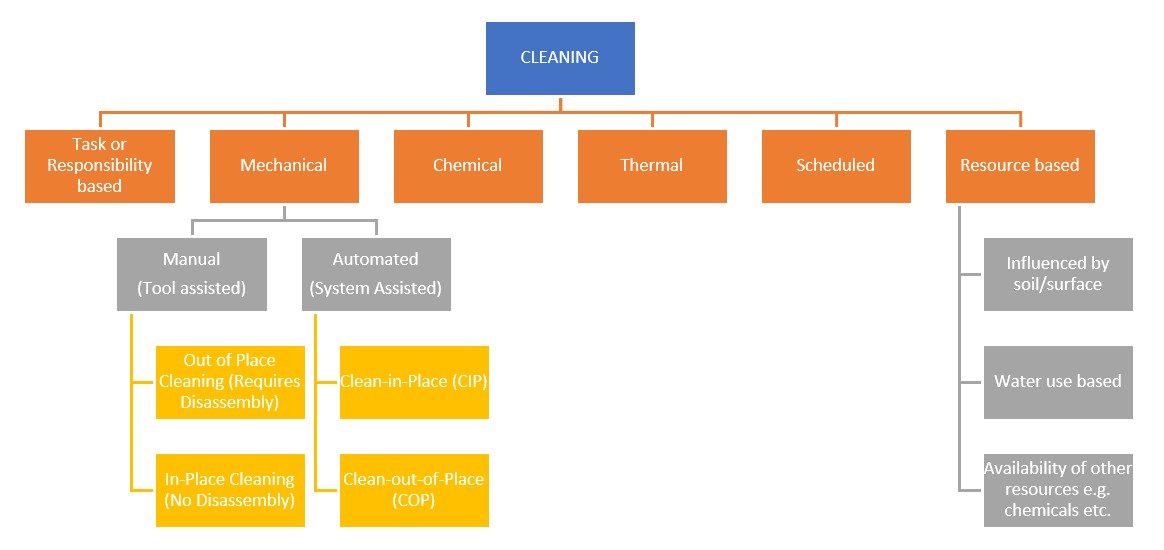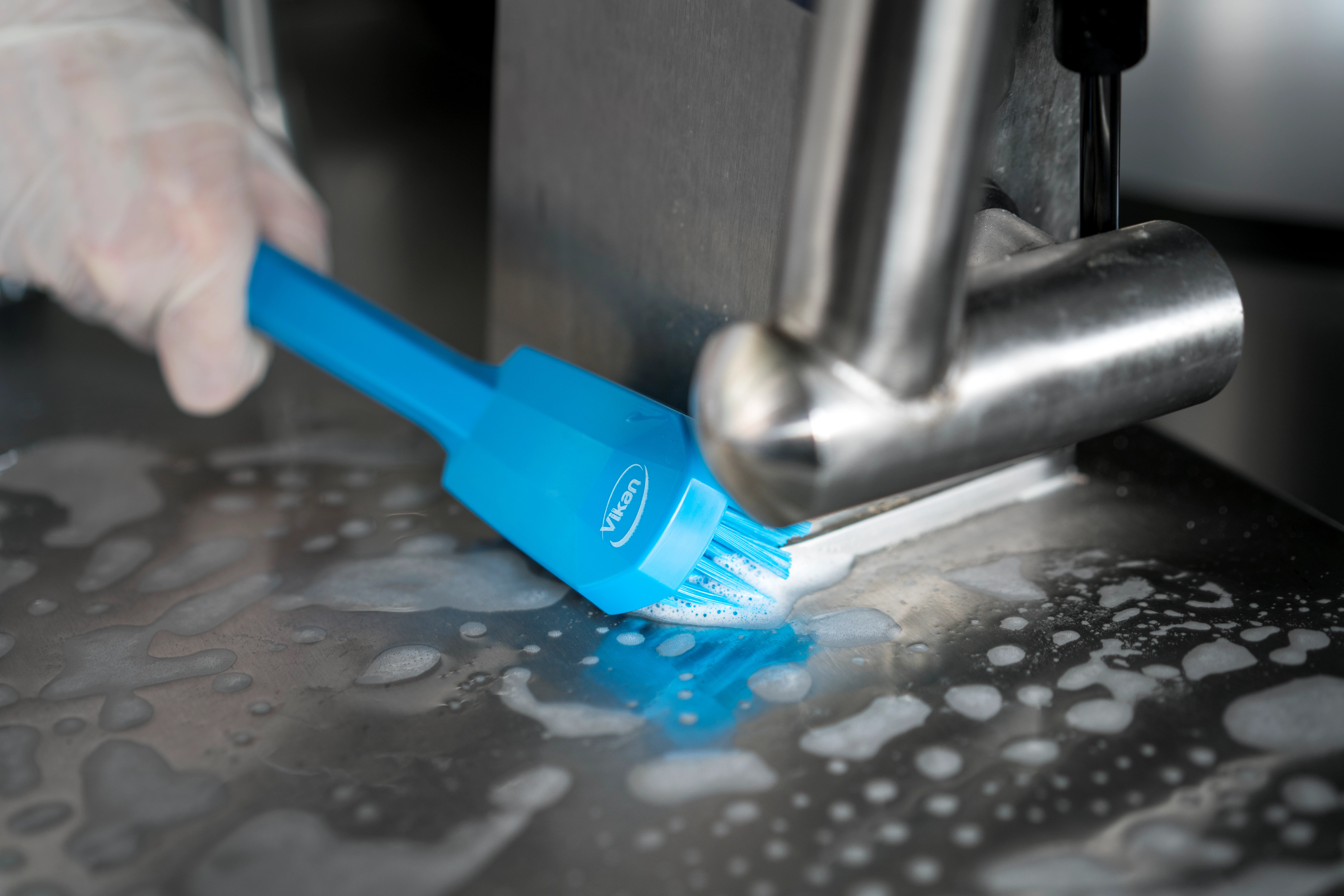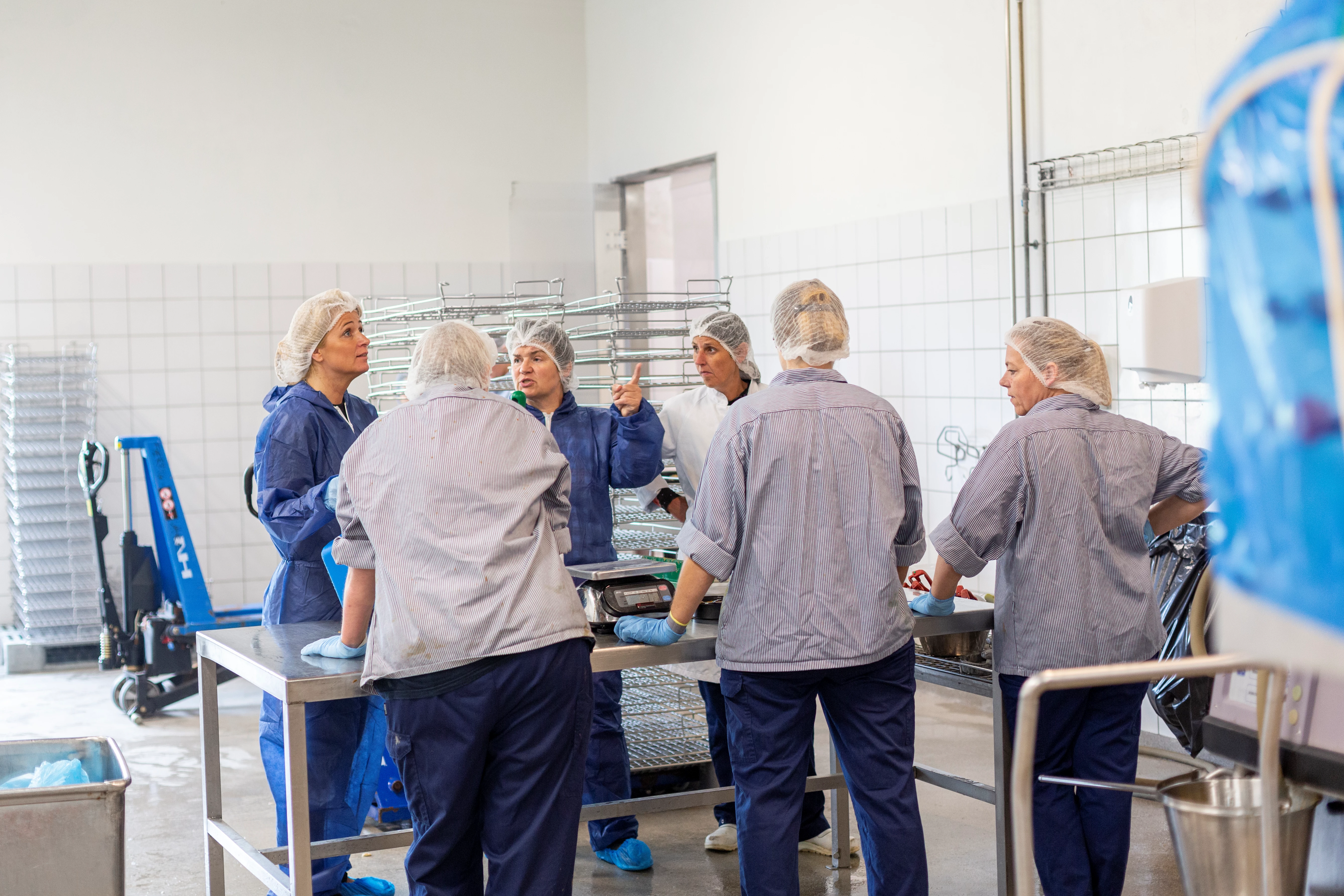In part one of this series, we discussed how manual cleaning involves the use of tools, such as brushes, scrapers, and squeegees, along with other cleaning aids, to effectively remove contamination from surfaces and equipment.
In numerous instances, manual cleaning offers the best practical option for cleaning, especially when it comes to the cleaning of complex equipment. However, is manual cleaning just about, say, an employee using a hand brush to clean the internal surface of a soiled tank? Well, no, it’s more than just that!
Understanding the concepts
Cleaning involves the removal of visible debris from a surface. Industry best practices and regulatory requirements have always been to clean before you disinfect the surface.
Cleaning should not be taken as a one-size-fits-all activity, since several factors may influence how, when and why to remove soils from a surface. The cleaning activity may be achieved in many ways, and a single cleaning method may involve overlaps of various cleaning activities:

As shown, manual cleaning may or may not involve the disassembly of the parts of equipment. Moreover, it is important to define the ‘level of clean’, which is a risk-based decision generally dependent on the type of contaminant (mainly microorganisms, allergens, and foreign material) to be removed from a surface. Some of the factors influencing the level of clean are as follows:
- Whether the contaminant/hazard present is required to be eliminated or minimised to an acceptable level through the cleaning process.
- Whether the cleaning activity itself should minimise the spread of the contaminant.
- Whether the cleaning activity will have a negative impact on the surface being cleaned.
- Whether the prevailing regulations, standards, and best practices will be met through the cleaning activity.
Â
Minimize the spread of contamination during cleaning
As shown below, certain cleaning activities may increase the risk of contamination spread, hence they are deemed high-risk.

As illustrated, use of high pressure cleaning techniques, is a high-risk activity compared to wiping or scraping. The former will generate liquid aerosols and droplets, or particles, that will spread over a considerable distance, carrying with them contamination from the surface being cleaned. However, other common manual cleaning techniques, like scrubbing, or sweeping, are generally classed as medium risk, requiring some caution in their performance. For instance, scrubbing dirty parts using a brush is better done by submerging the part under the water while scrubbing, to minimise the spread of droplets generated by the scrubbing action.
Select the right tool for the right job
The selection of manual tools is vital, since this can greatly influence its cleaning efficacy and durability, and its subsequent cleaning maintenance and storage. Some useful tips on tool selection are provided below:
- Choose the right bristle type for brushes and brooms. Stiff bristled brushes are good for removing stubborn debris, with or without the use of water, but may damage surfaces, while very soft bristled brushes may be ineffective in removing rigid soils from surfaces but are good for sweeping up fine powders.
- It is best to use total-color tools that are easily identifiable, by use or hygienic zone. Segregation of tools in this way goes a long way in reducing cross-contamination in food plants.
- Where higher temperatures are encountered in operations, use tools capable of withstanding high temperatures.
- Evaluate whether special application tools will be required, say, for conducting deep cleaning, detailed cleaning, or high- or low-level cleaning.
- Hygienically designed tools normally have smooth surfaces, rounded edges, and no crevices where contaminants can accumulate and be difficult to remove. Vikan’s UST brushes and Ultra-Hygiene range of handles and squeegees are great options for hygienic tools to use for food manufacturing facilities processing high-risk products.
Â
Recent blog posts

ABC’s of Manual Cleaning - Part I: Why is it important?
This blog series will go over the various ins and outs of manual cleaning and why it is necessary for the safe production of food.
ABC’s of Manual Cleaning - Part III: How does Manual Cleaning Work?
In this third part of our six-part Blog on cleaning, we address the key question: how is the manual cleaning process typically implemented?
ABC’s of Manual Cleaning Part IV: Where and When to Manual Clean?
In part four, we will explain the basics of how to identify the locations or areas that require cleaning, and how to determine how often they’ll need cleaning. These steps are very important for th...
Recent blog posts

ABC’s of Manual Cleaning Part V: Who is Responsible for Manual Cleaning?
In part five, we are going to briefly focus on understanding the relevant departments involved during the cleaning and sanitation process within a food facility.
ABC’s of Manual Cleaning Part VI: Regulatory and Standards Expectations Regarding Manual Cleaning
In this, our final Blog in the series, we’ll look at the EU and U.S. food safety and hygiene regulatory requirements, key industry and global standard requirements, and the best sanitation practice...
Double Layer Worktable With Back
Double Layer Worktable With Back,Double Layer Worktable,Double Layer Worktable With Back Stable,Stainless Work Table
Jiangmen Xinweijie Stainless Steel Products Co., Ltd. , https://www.xxdkitchenware.com
